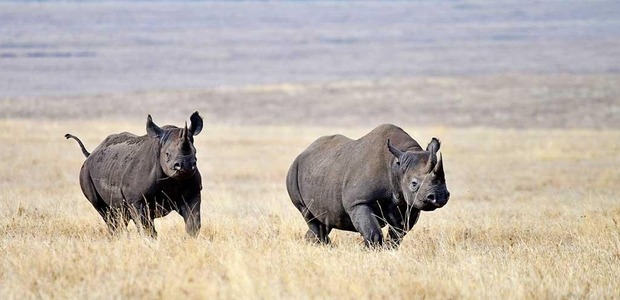advertisement
How wildlife conservancies are using IoT to track location of endangered rhinos in Tanzania
By 1970 there were an estimated 65,000 rhinos left globally. Today, the black rhino remains a rare sight due to…

By 1970 there were an estimated 65,000 rhinos left globally. Today, the black rhino remains a rare sight due to an increase in poaching. Poaching pressure escalated during the 1970s and 1980s as a result of the rising demand for rhino horn in Asia and the Middle East.
The wave of poaching for rhino horn rippled through Kenya and Tanzania, continued south through Zambia’s Luangwa Valley as far as the Zambezi River, and spread into Zimbabwe.
Between 1970 and 1992, the black rhino suffered a 96% reduction in numbers, with total numbers dipping as low as around 2,400.
Poachers remain the biggest threat to the black rhino. However, with strict protection and effective biological management, black rhino numbers are slowly recovering and currently there are approximately between 5,042 and 5,455 animals (according to figures published by IUCN in 2016).
advertisement
However, today, it is not any different from the 70s, black rhinos remain Critically Endangered because of rising demand for rhino horn, which has driven poaching to record levels.
A recent increase in poaching for instance in South Africa threatens to erase the conservation success. The increase is driven by a growing demand from some Asian consumers, particularly in Vietnam, for folk remedies containing rhino horn. In 2014, a total of 1,215 rhinos were poached in South Africa – a 21 percent increase from the previous year.
This has seen many wildlife conservation agencies put measures in place to protect the remaining rhinos. The Internet of Life and the ShadowView Foundation, organizations founded for the purpose of using innovative technology to protect the environment and endangered species, developed a LoRa-equipped sensor that is implanted directly into the rhino’s horn.
advertisement
The Internet of Life has so far deployed LoRaWAN IoT network to monitor endangered species and improve operations at Mkomazi National Park in Tanzania
The sensor gives park rangers the ability to accurately monitor the whereabouts and activities of the endangered black rhinos and keep them safe from poachers.
The LoRa-equipped tracking sensor is part of a comprehensive LoRaWAN-based IoT security solution that is deployed throughout Mkomazi National Park. The rhino-tracker sensor shows the location of the animals within the sanctuary, allowing the park’s security personnel to strategically position themselves to watch over the rhinos.
advertisement
Another smart application used by the park is the monitoring of gate open/closures through solar-powered LoRa-based sensors installed on worker vehicles. The same devices are also used to track the welfare of personnel. All the data is transmitted from the various sensors within the network to an observation room where the tracked items appear on a digital map.
Tim van Dam, Internet of Life spokesperson. “From a technology standpoint, our IoT sensor network gives us everything we need to be successful, providing long-range coverage, a wireless signal that is difficult for poachers to detect, and low-power operation to ensure the batteries in our sensors can last for at least a decade. It is our hope that by implementing this type of network in other wildlife sanctuaries, we will be able to work with local groups to keep endangered animals safe and help preserve some of the most wonderful natural ecosystems in the world.”
Key Features of LoRa Wireless RF Technology include:
Long Range: A single base station using LoRa Technology enables deep penetration capability for dense urban environments and indoor coverage, while also providing the ability to connect to sensors more than 15-30 miles away in rural areas.
Low Power: The LoRaWAN protocol was developed specifically for low power and enables unprecedented battery lifetime of up to 20 years depending on the application.
Geolocation: Enables tracking applications without GPS or additional power consumption.
Low Cost: LoRa Technology reduces up front infrastructure investments and operating costs, as well as end-node sensor costs.
Open Standard: The LoRaWAN protocol ensures interoperability among applications, IoT solution providers and telecom operators to speed adoption and deployment.
However, this will not be the first time, that technology has been used to conserve wildlife, for in stance, in 2005, The Kenya Wildlife Service adopted the smart collar technology in elephants in Kenya to help ease human-animal conflicts. The collars contained a mobile SIM card capable of sending text messages with the animal’s location for tracking their movements, and in the future may be able to ‘warn’ local farmers that the elephants are approaching their fields through a text message.